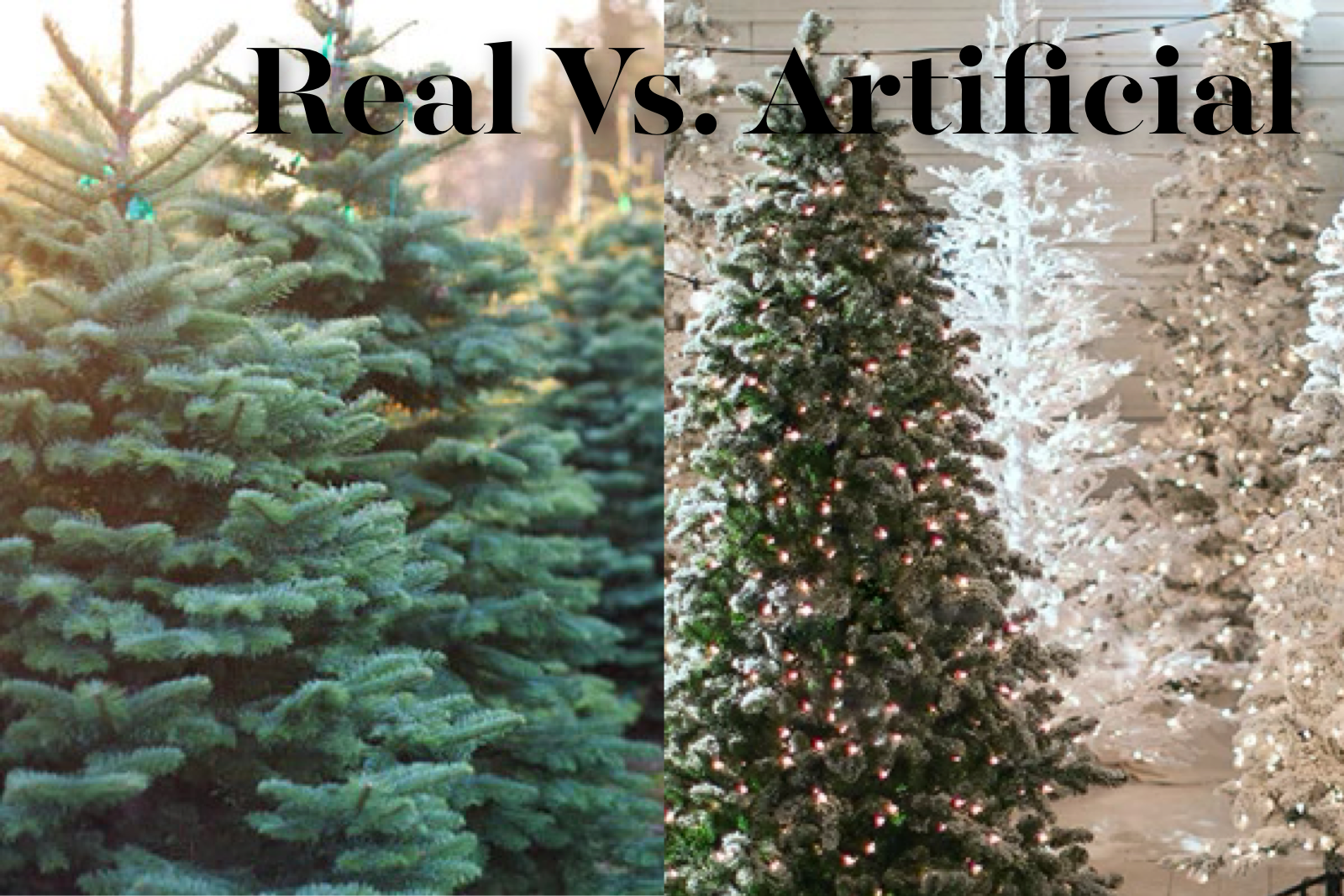Is there any harm in buying a real Christmas tree?
I was listening to the radio (102.7 EQX) and the DJ was taking about a new book that has recipes you can prepare using/recycling your old Christmas tree titled “How to Eat Your Christmas Tree.” How intriguing! I’m big into environmental sustainability and recycling but never have I ever thought…. “let’s eat the Tree!”
The author, Julia Geogallis explains how in the UK there are over 40 million Christmas Trees chopped down each year and it’s contributing to a less sustainable society and this got me thinking; Isn’t that why artificial trees are produced, to reduce the global impact of chopping down trees every year for Christmas? Personally, in my family we get a real tree or fresh Christmas tree each because we love the evergreen smell that fills the whole house during Holiday season. I think, by buying this Christmas tree I am allowing this tree to fulfill its life‘s purpose. This tree was planted with the intention of being used for someone’s Christmas tree. It was nurtured and cultivated with that sole idea in mind. So for that point, I don’t necessarily think it’s bad to chop down trees for Christmas. The thing is consider is while our population is growing and over foresting is happening, does there exist a deficit or excess of trees? Are we wasting each year? For that matter, how long does the average Christmas tree take to grow? What are the consumer percentages year to year? Is there always an increase demand for Christmas trees or has the demand remain constant year to year?
…. Is there any harm in buying a real Christmas tree?
To help find the answer, let’s get the facts.
I ran a quick check and the estimate is “that annually around 33 to 36 million Christmas trees are produced and cut in the US and 50-60 million in Europe [s]“
It takes an average of 6-8 years for the trees to grow to a marketable height. The most common size and range from 7'–7.5' tall. Different varieties of trees take varying lengths to mature. For example a Douglas Fir can take between 4 and 15 years to reach that size and a Fraser fir takes 7 to 10 years to grow to a height of 6 to 7 feet. In North America, most common type of tree the Balsam fir for its fragrance, beautiful color, long-lasting needles and nice shape. FYI Balsam firs grow 1 foot each year, requiring 7-10 years to go to harvesting size [s].
How many are planted? > To get an average, consider that in America there are approx 20,000 Christmas tree growers. NYS is home to 875 tree farms covering almost 19,000 acres! Expert growers recommend plantings about 1,500 trees per acre. In the US, there are about 350,000 acres in production for growing Christmas Trees. So math time… 350,000 acres * 1,500 tree seeds = 525 million trees! Not so fast, the tree harvesting/ survival rate is 64-80% meaning that of those 525 million, only ~ 420 million are commercially usable/sellable.
What about the unused trees? In the US, there are more than 4,000 local Christmas Tree recycling programs. One could chop the tree from its roots, that’s it, one season is all you get. The good news, real trees are biodegradable. The Earth loves trees to decompose because it returns valuable nutrients back to the soil. If not decomposing you could always recycle the tree. Many recycling options include; Soil erosion barriers, Fish feeders, Bird feeders, Mulch, Paths for hiking trails
What is the global impact? This is a tricky question because there are so many factors to consider. For one thing, tree farming is a profitable enterprise that employs hundreds of thousand people so that provides stability for families and communities. There are transportation expenses for shipping the trees to your home town.
the typical artificial tree travels more than 8,400 miles 1) by truck from a factory in China to a port, 2) across the Pacific Ocean on a container ship, 3) on another truck to your local big-box store, before 4) you finally drive it home. Emitting approximately 9 pounds of CO2
he typical US tree travels approximately 230 miles from 1) the site of seed production to 2) the nursery to 3) the farm to 4) the retailer and finally, 5) to a customer’s home.
If you think global impact is the carbon footprint, via earth.org “Real trees have an average carbon footprint of 3.5kg of carbon dioxide if they are disposed of via a wood chipper or bonfire. However, if they end up in landfills, the carbon footprint increases four-fold, which is equivalent to 16kg of carbon dioxide . In comparison, an artificial tree is estimated to have an equivalent carbon cost of 40kg should it be discarded. We would have to reuse our artificial Christmas tree for at least 12 years for it to be more eco-friendly than a real Christmas tree [s].”
The other option? Artificial Christmas trees are typically made of petroleum-based plastics (PVC) and metal. They are non-biodegradable and non-recyclable, in fact they exacerbate the pressure on landfill when they are disposed of at the end of its life cycle (the average usable lifespan is six years). Therefore it will produce more greenhouse gases and will pollute surrounding ecosystems by leaking harmful chemicals into the soil.
So for me, based on this mounting data, a real tree is the way to go. It doesn’t harm the environment and it fulfills the purpose of the tree’s life and it enriches your holiday experience.

